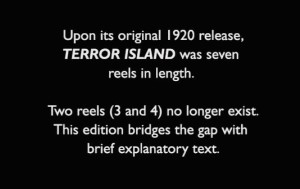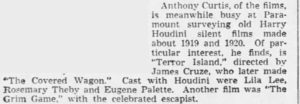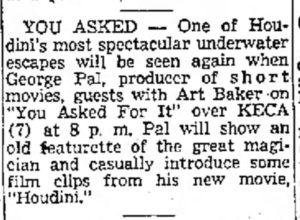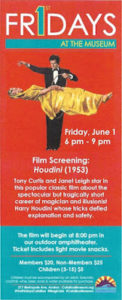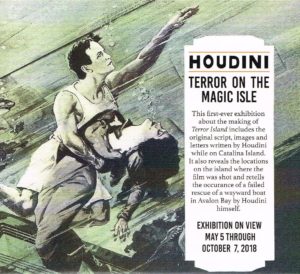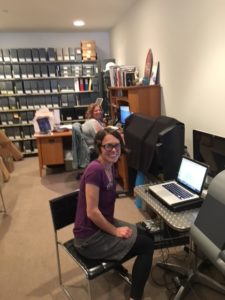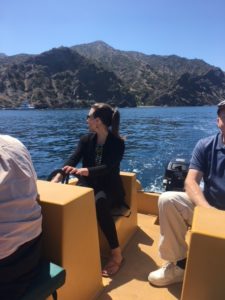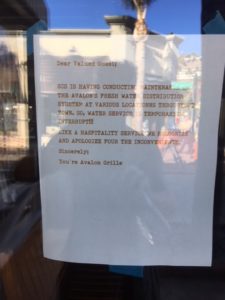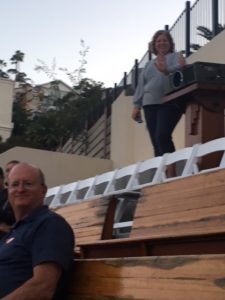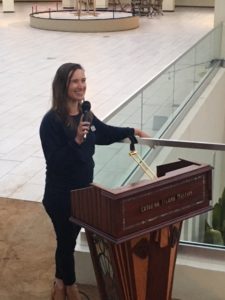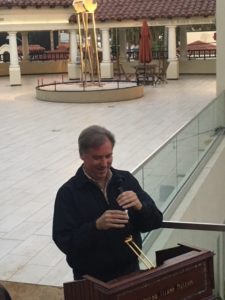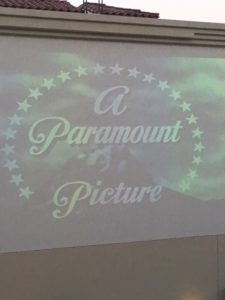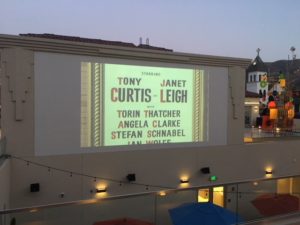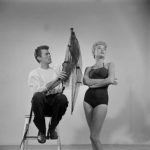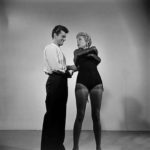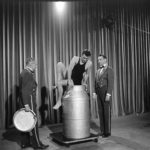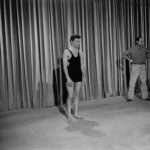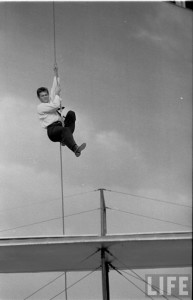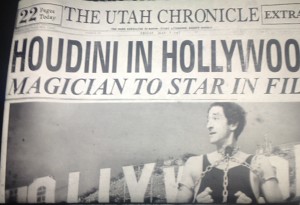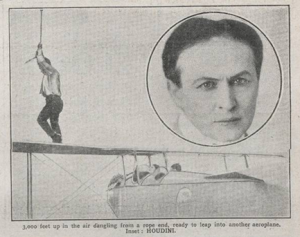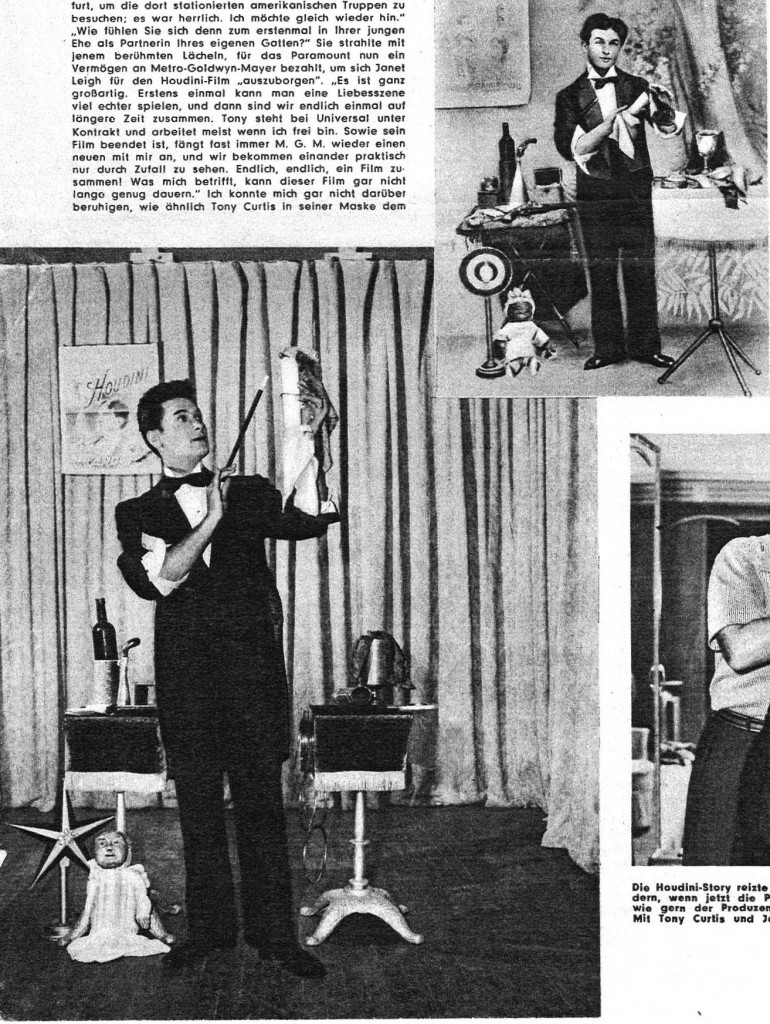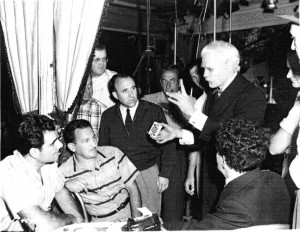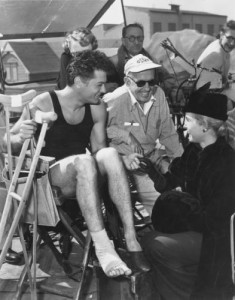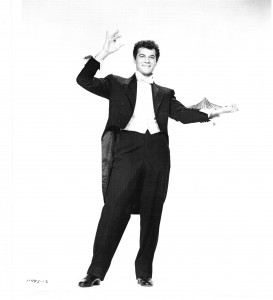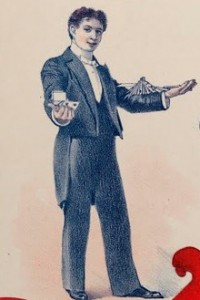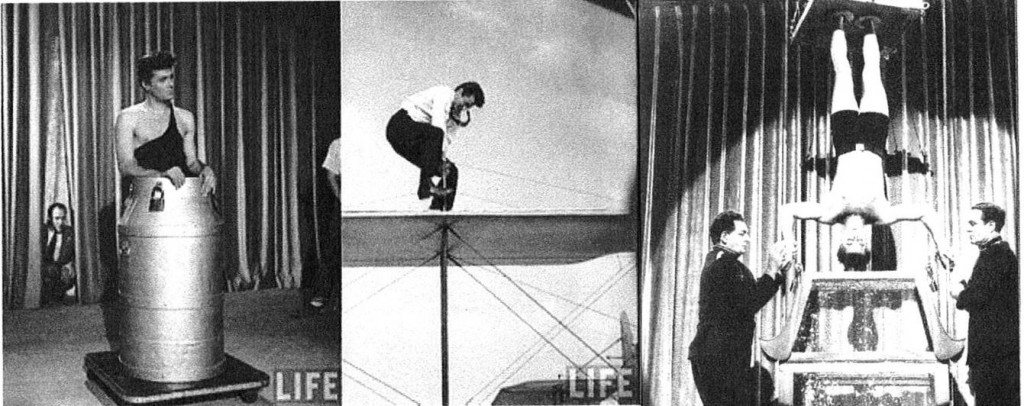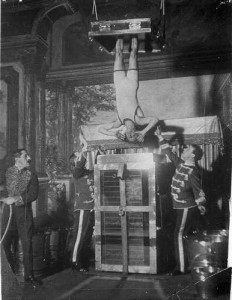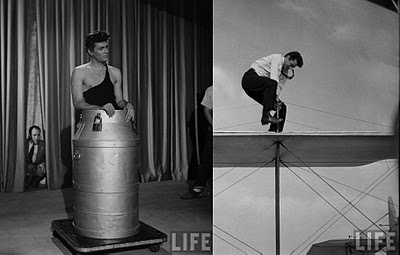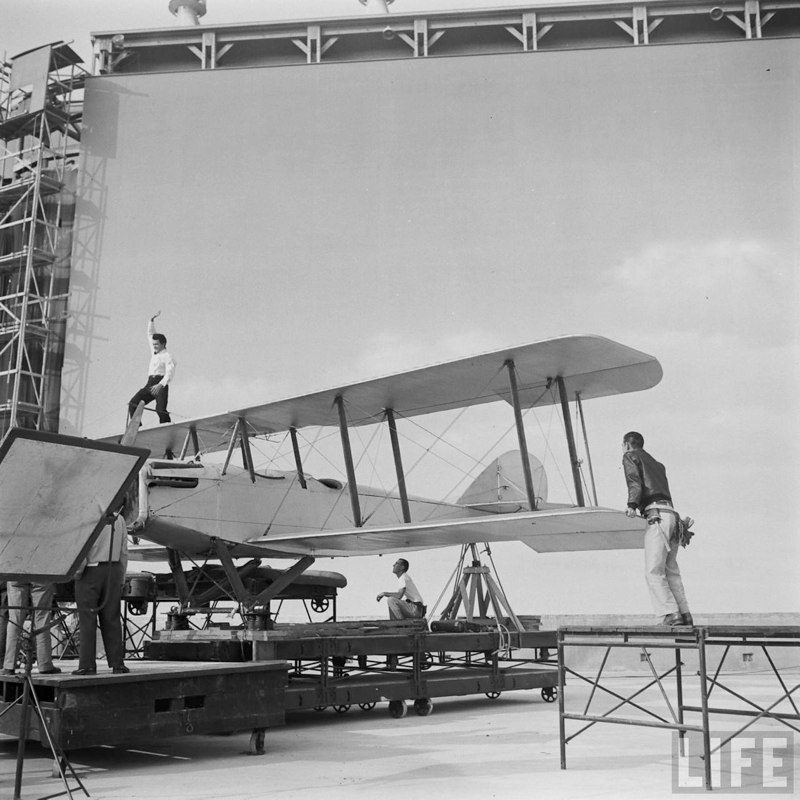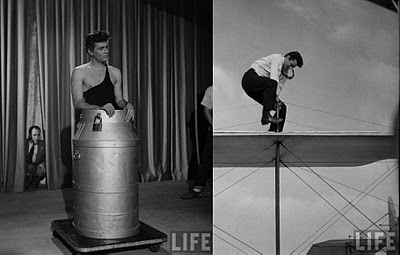Terror Island was released by Famous Players Lasky’s Paramount Artcraft Production Unit in 1920 and then re-released in 1922 under their Realart Picture Production Unit, where the title cards changed to reflect that it was a Realart Picture.
The exisiting version of “Terror Island” found in the Library of Congress (LoC) is from the Realart print and is approximately 55 minutes, but it is missing its reels (Parts) Three and Four:
- Terror Island Part 3 (1 of 4)
- Terror Island Part 3 (2 of 4)
- Terror Island Part 3 (3 of 4)
- Terror Island Part 3 (4 of 4)
- Terror Island Part 4 (1 of 2)
- Terror Island Part 4 (2 of 2) Underwater Box Escape
Documentation at the Margaret Herrick Library gave the original length of each of the seven reels, which added up to 5939 feet:
Reel One: 975 feet, Reel Two: 848 feet, Reel Three: 958 feet, Reel Four: 917 feet, Reel Five: 889 feet., Reel Six: 784 feet and Reel Seven: 568 feet.
If you compare the running time of the five existing reels (1, 2, 5, 6 and 7) at 55 minutes (54.19) to the footage per reel, the LoC print is missing about 25 minutes (Reel 3 and 4) played at 20 fps (75 feet a minute).
So, what happened to these missing reels? My colleagues (John Cox, Leo Hevia) and I feel that it was around the time of the Tony Curtis “Houdini” movie, when Parts 3 and 4 got separated from the rest.
Let’s look at the evidence.
In July of 1952, Tony Curtis was preparing for his role in Houdini (released 1953), by surveying Silent Houdini Films at Paramount, which included Terror Island.
On July 6th 1953 originally and then on August 27th of 1953, George Pal’s appearance as a guest on the Art Baker’s “You Asked For It” show aired, where they ran a part of the original Houdini serial Terror Island showing the under water escape of Houdini from a packing case. Then a strip was shown from George Pal’s new picture showing Tony Curtis duplicating the same feat, escaping from the packing case after being tossed into the ice covered Detroit River.
It sounds like Reel 4 was taken out of the metal canister that contained the reels of Terror Island and was used for the “You Asked For It” show and never returned back to the canister. According to Leo Hevia:
It’s the only thing I can think of that would explain the missing reel. The completed picture was divided into half a dozen or so reels. Those reels went into metal canisters that looked kinda like clam shells. Since the underwater packing box escape scene was the only part needed for that TV show, it appears the techs removed that particular reel from the canister and never bothered to put it back after it was used.
So that explains one reel, but two reels are missing. John Cox has an explanation:
In TI’s day, film reels couldn’t be longer than 1000 ft. That became the standard reel length for post production work right up to the end. However, theaters projectors could eventually handle 2000 ft. reels, so when a release print is made, those 1000 ft reels are combined into one “A/B” reel (two 1000 ft loads). By the 1950s, there was an awareness of the hazards of nitrate stock, so Paramount’s archival print of TI was probably new and therefore what was in the canister were A/B reels. So what would have been plucked out of the can for this promotion would have been Reel 2 A/B, and on this would be TI’s original Reels 3 & 4. Hence, when this reel was lost, two reels of TI were lost.
In 1970, Paramount donates “Terror Island” to the American Film Institute collection at the Library of Congress:
 So thanks to the Tony Curtis “Houdini” movie, George Pal, and the “You Asked For It” show, the print donated by Paramount to the LoC is missing Reels 3 and 4 or Reel 2 A/B, depending on how you look at it.
So thanks to the Tony Curtis “Houdini” movie, George Pal, and the “You Asked For It” show, the print donated by Paramount to the LoC is missing Reels 3 and 4 or Reel 2 A/B, depending on how you look at it.
Special Thanks to John Cox and Leo Hevia for their contributions on this subject.

